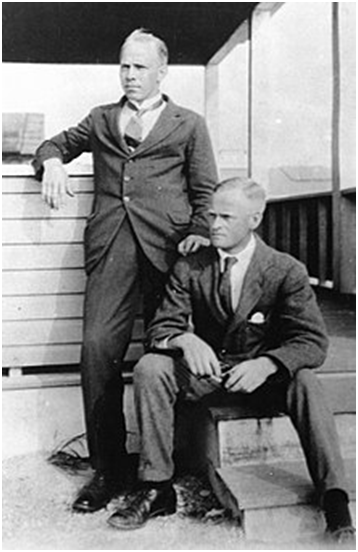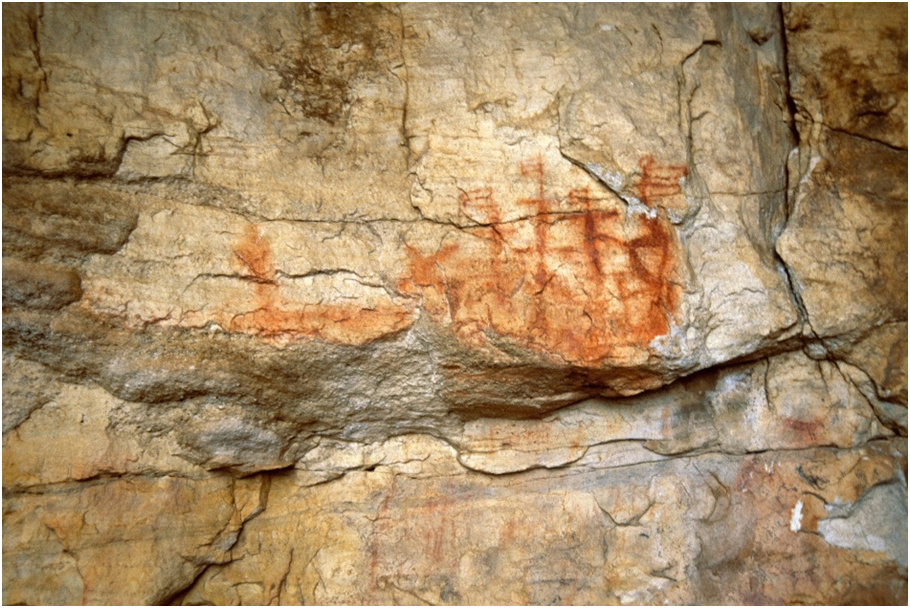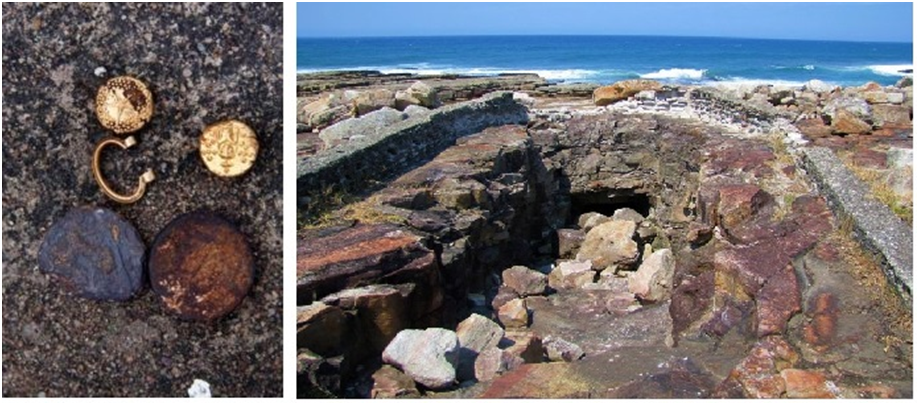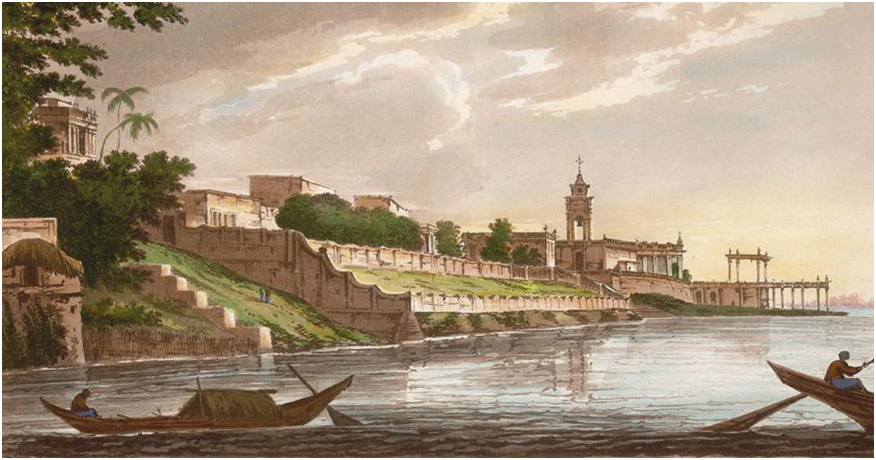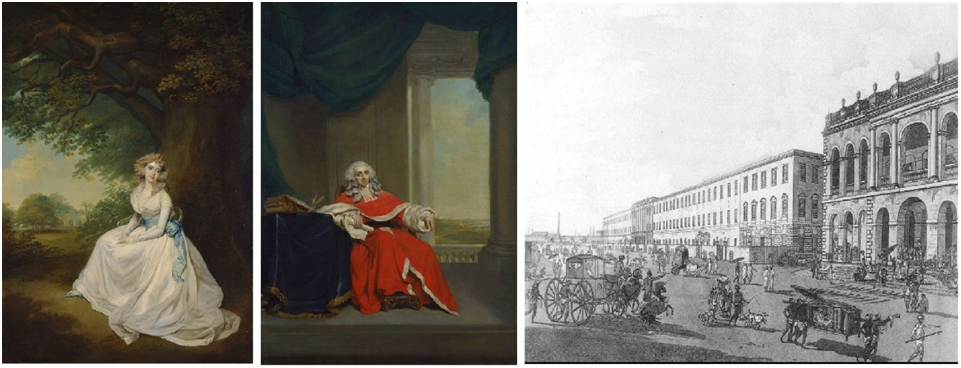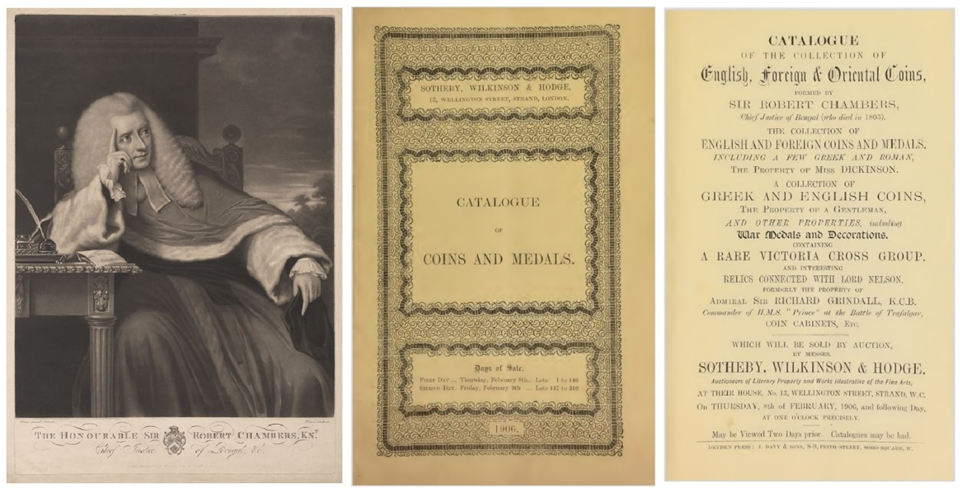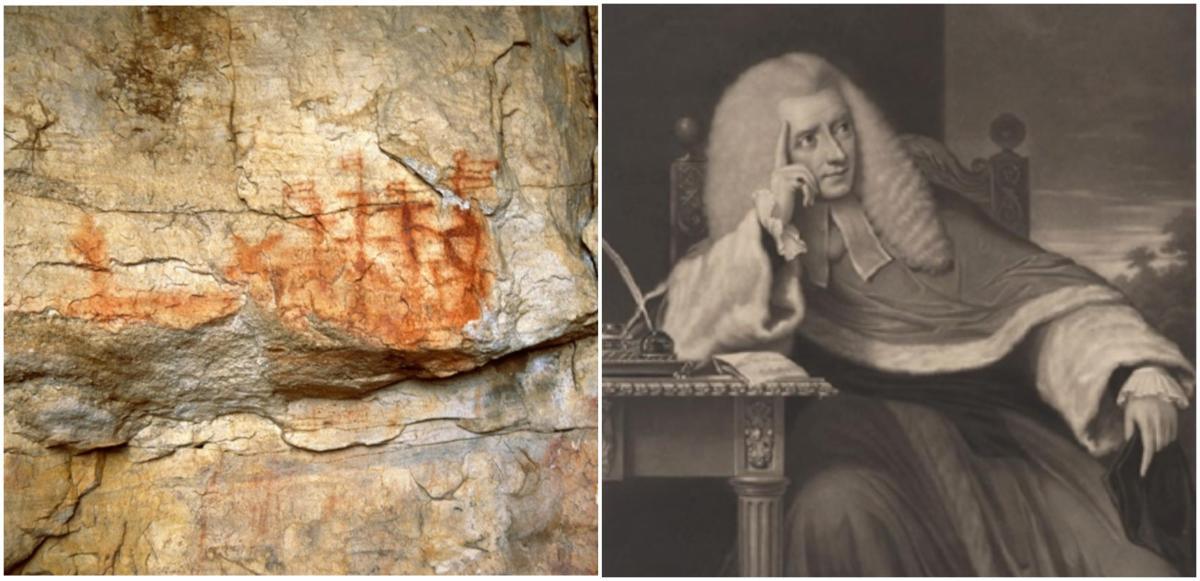
Disclaimer: Any views expressed by individuals and organisations are their own and do not in any way represent the views of The Heritage Portal. If you find any mistakes or historical inaccuracies, please contact the editor.
In part one of this two-part paper (click here to read), we mentioned an article written by G.F. Hill of the British Museum in The Classical Review in October 1897. It concerns an astonishing find made approximately four years earlier of ancient bronze Greek and Roman coins at Fort Grosvenor in Pondoland... “The site of what had once been a Bantu hut was being excavated in search of treasure, when, some ten feet below the surface, the diggers came upon a calabash which crumbled away in their hands”. Hill wrote that the coins ended up in the collection of Mr. Thomas Cook, a businessman from East Pondoland who was present during the excavation and could testify that they were all found together.
A researcher, J.F. Schofield of Durban commented in 1927 on the find and was of the opinion that the ancient coins fell into three distinctive groups, unlike Hill, who identifies two groups being Ptolemaic (305 to 204 BC) and Roman (296 -313 AD). Schofield says the third group consists of Byzantine coins, one being of the reign of John I, who ruled from 969 to 976 AD.
Raymond Dart (left) and Joseph L. Shellshear, c. 1921 (The Embryo Project Encyclopedia)
In part 1 we posed the following question: How did a hoard of 28 ancient coins end up 10 feet under the ground in a clay pot in Pondoland, some of which were struck almost two thousand years before Jan van Riebeeck landed at the Cape?
We mentioned that Professor Raymond Dart of the University of the Witwatersrand, in an article written in 1925, was of the opinion that there is a distinct possibility that the coins were brought here by ancient civilizations visiting our shores long before the first local visits by foreign ships were recorded in the late 1400s and 1500s.
A contemporary of his, J.F. Schofield, previously mentioned had another view. He suggested that the coins arrived here in Southern Africa via the Arab trade.
As a matter of interest: Professor Dart is today remembered for his corroboration of the 1924 discovery of the juvenile Australopithecus Africanus skull, "the Taung Child" as an extinct species of early humans who lived in Southern Africa.
Professor Dart thus believed that it was possible that the coins were brought here by ancient sea-faring travellers while Schofield speculates that the coins were brought here by people of the Arab world trading with the indigenous people of Southern Africa.
What other possibilities are there for an ancient hoard of coins ending up in South Africa? We believe there are at least two.
Firstly, as we have mentioned in Part 1, foreign ships infrequently ran aground on the mid-east Indian Ocean coast of South Africa and two examples were given, the first being the São João which had sunk on 8 June 1552 and the Grosvenor, an East Indiaman which ran aground on 4 August 1782.
Another example is the Sao Bento, a Portuguese East Indiaman that was wrecked on the Pondoland coast on 21 April 1554. Nearly 150 people died, while 98 Portuguese sailors plus some slaves travelled overland to Delgoa Bay (current day Maputo in Mozambique). After 12 days of travelling through the hills, mountains, and rivers of the region, the company stumbled upon an abandoned village that contained pieces of china and other western artefacts that they were certain originated from the wreck of São João, shipwrecked two years earlier. Sadly, only a few survived the trek. In his book Shipwrecks and Salvage in Southern Africa (1988), Malcolm Turner identifies quite a few other shipwrecks in the area, prior to the Pondoland coin hoard discovery in the 1890s.
South African rock art depicting a three-masted European sailing ship thought to date from the first half of the 1700s. (British Museum)
Could the hoard have emanated from one of these ships, not as coins still in circulation during the time period of the shipwrecks, but as part of a collection of ancient coins that belonged to one of the passengers or crew members? The hobby of coin collecting stretches back to ancient times. For example, Caesar Augustus (63 BC – 14 AD) collected coins pre-dating his reign. During the period that sea-faring nations began circumnavigating the Cape of Good Hope in the late 1400s, coin collecting was well established as a pastime; even if only mainly pursued by the higher classes. Further speculation allows for the possibility that the ancient coins discovered in Pondoland could also have been a gift from someone in say Europe by ship to a friend, business associate or high-ranking official in the East (or vice versa), but sadly never reached its destination. Hence, it is quite possible that the hoard was originally part of a collection that was shipwrecked on the Pondoland coast and was saved by a survivor (or washed up) and was then either found, traded or stolen by locals.
Ignoring shipwrecks, further speculation points to the possibility that it was buried in much more recent times, but pre-1890s, after being stolen or traded.
In Part 1 we mentioned that since the 1830s missionaries and colonists started to settle in the region and two decades later, by 1850, Pondoland had two British colonies as its neighbours, Natal to the north and the Cape Colony to the south. More than half a century before the hoard was found, Europeans were already settled in the region and would have frequently traversed through the area. Was one of them perhaps a collector of ancient coins who was robbed or lost them? Could it have been an inheritance?
In our first part, we also recorded other ancient coin finds in South Africa, but these were probably accidentally lost as they were once–off finds vs. the Pondoland hoard that was without question intentionally buried as it was found 10 feet under the ground in a calabash (clay pot).
Coins from antiquity found in areas that are separated by vast distances from ancient nation-states like Greece and Rome are nothing new. In 2020, the staff of gaia.com wrote an article entitled Out of Place Artefacts; Who Really Discovered America? saying “Several caches of Roman coins have been found buried throughout North America, dating back to the 16th century (the discoveries). This has led many to believe that it could be evidence of a pre-Columbian European presence. While numismatists and archaeologists are often sceptical, it has led them to at least examine whether there could be any credibility to this theory. A study conducted by Jeremiah Epstein details 40 reports of anomalous coins found throughout the United States, with some appearing in Native American burial mounds”.
The study by the late professor Jeremiah F. Epstein, then an anthropologist at the University of Texas at Austin, concluded that no single report of a classical-period coin in America can be used as evidence of pre-Columbian trans-Atlantic contact. He says “if Romans ever got to America, we haven't got any evidence of them yet.” The same, in our view, could be said of Southern Africa.
Our theory
We will remember that the first report of the Pondoland hoard (that we are aware of) was in 1897 by G.F. Hill from the British Museum. Hill mentions three pieces of information that may easily be overlooked.
Firstly, the find was made near Fort Grosvenor in Pondoland (Hill probably meant Port Grosvenor as there is no Fort Grosvenor in Pondoland). Secondly, that it was the result of the diggers searching for treasure and thirdly, that the calabash in which the coins were stored, crumbled in their hands.
From this, we can deduce that the hut was situated near the spot where the Grosvenor was shipwrecked in 1782. We can secondly assume that the diggers expected there to be treasure buried at that spot and that the pot in which the coins were found, was of old age. The association of the Grosvenor with treasure goes back a long time. Some believed the ship carried large quantities of gold, silver and precious stones and even the so-called Peacock Throne, the jewelled seat of the Mughal Emperors of India. In 1880, an article appeared in the Natal Mercantile Advertiser that mentioned that numerous gold and silver coins had been picked up on the beach near the wreck.
This seems to have set off some treasure hunters to the area of which the first was Sidney Turner, who with a friend, Lieutenant Beddoes of the Durban Volunteer Artillery, used dynamite to blast the rocks in the area of the wreck site and retrieved coins and several cannons. Turner probably knew Thomas Cook, the owner of the hoard after it was excavated, as they both had business interests in Pondoland at the time and both lodged land claims against the Cape government that recalled the grants awarded to them by the Mpondo King. Possibly, Turner told Cook about there being buried treasure near the shipwreck site and as we know, Cook was actually present when the hoard was excavated.
Picture left: Gold Pagodas, silver coins and a gold swivel from the Grosvenor. (Geoff Spiby, the Scuba Shop SA). Picture right: The entrance to the tunnel that Sidney Turner dug can still be seen today. (Mark Heywood form the same source)
As far back as 1790, Jacob van Reenen was sent with a search party from the Cape to Pondoland by the Dutch East India Company (VOC) authorities to search for survivors of the Grosvenor. Van Reenen kept a journal of this epic journey. Most of the passengers initially survived the wreck, but only eighteen eventually made their way to the Cape.
Van Reenen wrote that on Wednesday the 17th (month not clear) they reached a certain spot “but saw nothing but five cannons and a great quantity of iron ballast. It was plainly perceived on a spot of ground, between two woods, that the people had made fires and sheltered themselves. Likewise, in the rising ground between the two woods, was a pit, where things had been buried and dug up again, this confirming to us what the runaway slave had told us, that everything had been dug up and dispersed very far into the country”.
In May 1885, the Times of Natal reported on the wreckage site: “The native chief at this place will not allow the (bronze) guns to be touched. A legend handed down amongst the inhabitants of the district is that sailors took a box ashore and buried it, and that treasure is hidden somewhere”. The article also states that “five silver coins, recovered from the rocks where… the Grosvenor, was wrecked in 1782, have been deciphered by a Mahommedan Priest at Durban, who gave them as of the Emperors of Delhi — the oldest date was that of Shah Alim, 1107-1112 AD.” This is interesting as if the coin was indeed correctly identified, it was already almost 700 years old when the Grosvenor was wrecked. We have tried to locate a ruler of Delhi with that name during the mentioned time period but were unsuccessful. Our search took us to the Pala Empire (750–1161 AD) which originated in the region of Bengal.
As we shall see, Bengal plays an important role in the rest of this paper. It was from here that the Grosvenor left India on 3 January 1782 to return to England. It arrived at Madras two weeks later where it was delayed. Only at the end of March could it resume its journey sailing to Ceylon (now Sri Lanka) from where it set off on 13 June 1782 for its final journey.
The Dutch settlement at Chinsura in Bengal. A Painting by William Hodges, 1787. Source: Public domain, via Wikimedia.
Southern India was known to the ancient Greeks and Romans who named the region Gangaridai and trade with the old western empires is well recorded. Many ancient Roman coin hoards have been discovered there and one researcher describes a few of them as (1) "a great many in a pot," (2) "about 500 in an earthen pot," (3) "a find of 163," (4) "some," (5) "some thousands," enough to fill "five or six Madras measures," i.e. perhaps a dozen quart measures; also, (6) of metal not stated, "a pot-full." These coins are the product of fifty-five separate discoveries.
In 1783, the year following the shipwreck of the Grosvenor, a lady by the name of Frances Chambers wrote a letter from Bengal to a friend, saying that there is no news of the Grosvenor arriving at St Helena in the Atlantic Ocean. So she correctly presumed that it never rounded the Cape. The reason for her anxiety was that one of the passengers on the ship was her 7-year-old son Thomas.
His father and her husband were Sir Robert Chambers (1737–1803), the then Acting Chief Justice of the Supreme Court of Judicature at Fort William in Calcutta, Bengal. It was British India’s highest court during the period. The boy was sent back to England for education purposes. During the voyage, he was under the care of Mr. and Mrs. Hosea who was also accompanied by their daughter.
Paintings of Sir Robert Chambers and his wife Frances (Google Art Project). The picture on the right shows the Supreme Court of Judicature at Fort William, c. 1786, where Sir Robert presided. (Cairn International)
William Hosea was considered a member of the colonial aristocracy in India and being wealthy paid the enormous sum of £2 000 (approximately £240 000 in today's value) for a passage on the Grosvenor for him and his family. Apparently, under suspicious circumstances, the family boarded the ship with “29 trunks and some furniture”. It is said that before the departure he managed to convert some of his assets “into £7 300 in rough diamonds and £1 700 in gold and silver, items which came with him on the Grosvenor”.
We know from past records that all four of these passengers, William and Mary Hosea and their daughter Francis, as well as the boy Thomas Chambers who accompanied them, survived the initial wreck but none made the odious journey by foot back to the Cape.
The reader will remember that earlier in this paper we asked the question whether the Pondoland hoard could have originated from a shipwreck, not as coins still in circulation during the time period of the shipwrecks, but as part of a collection of ancient coins that belonged to one of the passengers or crew members.
Our research unveiled something very interesting, in that the boy Thomas’s father, Sir Robert, was indeed a coin collector. When his collection was auctioned off by Sotheby, Wilkinson & Hodge in London many years after his death in 1906, it was named in their sales catalogue as The Collection of English, Foreign and Oriental Coins, Formed by Sir Robert Chambers, Chief Justice of Bengal (who died in 1803). The catalogue makes for some fascinating reading, as it turns out he was also a collector of ancient coins as lot 127 was listed as “Roman Imperial and Consular Denarii, and a Greek Didrachm of Corinth” (23 ancient coins in total). We have already shown that ancient coins were well known and found in hoards in the region of India where Sir Robert and his family were stationed. (He obviously could also have bought them from a dealer or fellow collector).
It seems that for some reason, coins were added to Sir Robert’s collection after his death in 1803, probably by a family member who kept on collecting, as, for example, lot number 136 in the 1906 auction was a 10 Pence from Griqua Town in South Africa that was struck in 1816, 13 years after his passing away.
Was it possible that he, for some reason, dispatched some of the coins from his collection with his son back to England on the Grosvenor? Possibly as a gift to say his father-in-law Joseph Wilton, a well-known sculptor of the day, who in his younger days stayed in Rome and actually studied antiquities. We also know that one of Sir Robert’s grandsons, George Wilton Chambers (born in 1812), died in 1904 and his wife Anne in 1905. Was it possibly their family’s coin collection that was put on auction by Sotheby’s in February the following year?
Was it possible that when the Grosvenor foundered, some of the boy Thomas’s luggage and possessions were brought to the shore to be lost or stolen? We know that in the small Hosea family travelling group that he was part of, were also two servants who could have assisted him, and who also survived the initial disaster. It is well recorded that natives looted what was left of the ship and both traded and stole many items from survivors of the wreck.
Nigel Penn from the University of Cape Town (2004) says “The Pondo at the wreck site could choose how to respond to the disaster that had befallen the Grosvenor castaways and they decided to exploit the survivors rather than assist them.”
We will probably never know the answers to these questions, but we do not believe that foreigners brought it here in ancient times, or that the coins were traded with the natives by Arabians as suggested by past historians.
In our view, the Pondoland hoard was most probably brought into the territory by a passing ship that was wrecked there, and there is a good chance that it was actually the Grosvenor.
Pierre Nortje is the secretary of the Western Cape Numismatic Society
Comments will load below. If for any reason none appear click here for some troubleshooting tips. If you would like to post a comment and need instructions click here.

